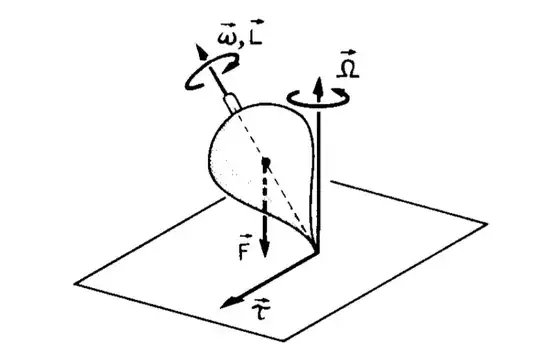Consider the following symmetric spinning top with a fixed point on the horizontal surface.
I have two questions concerning its motion:
let $\underline{\Omega}$ denote the precession angular velocity, that is, the angular velocity of the reference frame of the spinning top with respect to the inertial reference frame of the laboratory, then, applying the second cardinal equation and Poisson theorem yields: $$ \underline{\Omega} \times \underline{P_c} = \underline{r_c} \times M\underline{g} $$ where $\underline{P_c}$ represents the angular momentum with respect to the center of mass and $\underline{r_c}$ represents the position of the center of mass with respect to the fixed point; my question is how do we find out that $\underline{\Omega}$ must be directed vertically as in the above figure, since actually infinitely many vectors satisfy the previous relation?
assuming we have demonstrated that the spinning top follows a precession around the vertical axis, then, in that case, the center of mass is also rotating around such axis, therefore it should have a centripetal acceleration but what is the force responsible for it? (I thought about friction on the fixed point but the fact is that in any reference I have found friction is never talked about)
As always, any comment on answer is highly appreciated! Also, let me know if I can explain myself in a clearer way!


